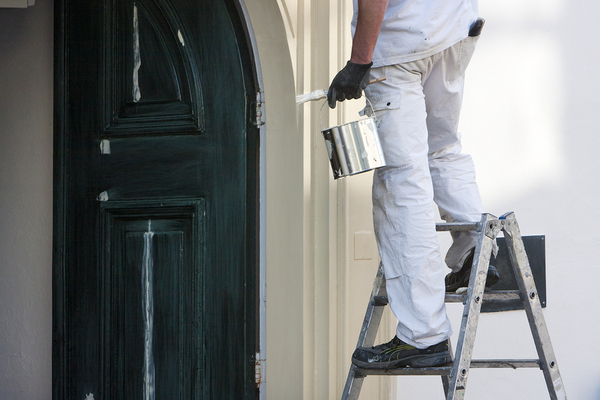_600x.jpg)
If you’re inspecting a house built before 1978, there’s a good chance that it contains lead-based paint. That’s when lead paint additives were banned for residential use. In fact, add a few years to that date and stay on the safe side. Who hasn’t opened an old can of paint for touch-ups?
If that news makes you uneasy, you should know that a certified home inspector often works around fixtures coated with lead-based paint. Many people live in homes where there’s at least a little on a staircase or trim. It’s not as common on walls.
As long as it’s in good condition or sealed, you and the future homeowners are probably safe.
What Makes Lead-Based Paint Dangerous?
If you read the news headlines, you’ll probably find a wide range of opinions about lead-based paint. Some go into full panic mode, insisting that a hazmat suit and professional abatement is required. Others say that it’s no big deal. The truth, as always, is someplace in between.
Children are at the greatest risk of health complications from lead exposure. However, adults can also suffer from lead poisoning. Just remember that the National Center for Healthy Housing says that intact lead-based paint is rarely dangerous.
When is Old Lead Paint Exposure a Risk?
If the paint is in good condition, it’s probably a minimal risk. Problems arise when paint is chipped, damaged or if paint dust is present. Excessive heat can also release lead fumes, which are dangerous to inhale.
That’s why lead-based paint should never be scraped or sanded, at least not while it’s dry. Heat guns shouldn’t be used to strip lead-based paint, either, because they release fumes.

Primer and paint seal lead-based materials to minimize the risk of exposure.
Are Homeowners Required to Remove It?
Confusion tends to surround the EPA regulations for lead-based paint removal. There is no regulation that requires homeowners to remove lead-based paint unless the house is a rental unit. There is also no regulation about how homeowners should go about abatement.
The EPA does explain that a company hired to remove lead-based paint must be certified. If the homeowner wants to keep the paint, strip it or make repairs, they’re perfectly within their rights to do so. It’s only when an outside company is paid to help that regulations come into play. The city or state may also have lead disposal regulations, which homeowners must follow.
How can Homeowners Protect Themselves?
The safest way for you to deal with lead-based paint is to leave it alone. Homeowners have a few options for keeping the paint or removing it with the least risk possible. The simplest is to paint over it with a primer and re-coat it with fresh paint.
For sanding, which is the riskiest and most objectionable method, spraying the paint with water before abrading the surface is the safest route. The Family Handyman offers a step-by-step process. Water eventually dries, so the lead dust slurry requires careful cleanup. A citrus-based paint stripper is safer than sanding. It doesn’t release dust, so homeowners can’t breathe in the fine particles.
Although lead-based paint was banned decades ago, it still exists in homes across the country. If it’s sealed or in good condition, the risks are minimal. You’ll rarely find it on ceilings or walls. But where glossy painted trim molding, doors and staircases exist, you’ll probably find some lead.
Although testing is required before you can confirm the presence of lead, it’s safe to assume that every house built during or before the 70s has some. Fortunately, proper care means it doesn’t have to be a deal breaker.
A home inspection alerts customers to potential hazards that lurk, and the report you prepare is their key to vital information. If you’re not using a forward-thinking home inspection mobile app, now is the time to switch. Download the Report Form Pro home inspection app for Android or find us at the Apple App Store.
